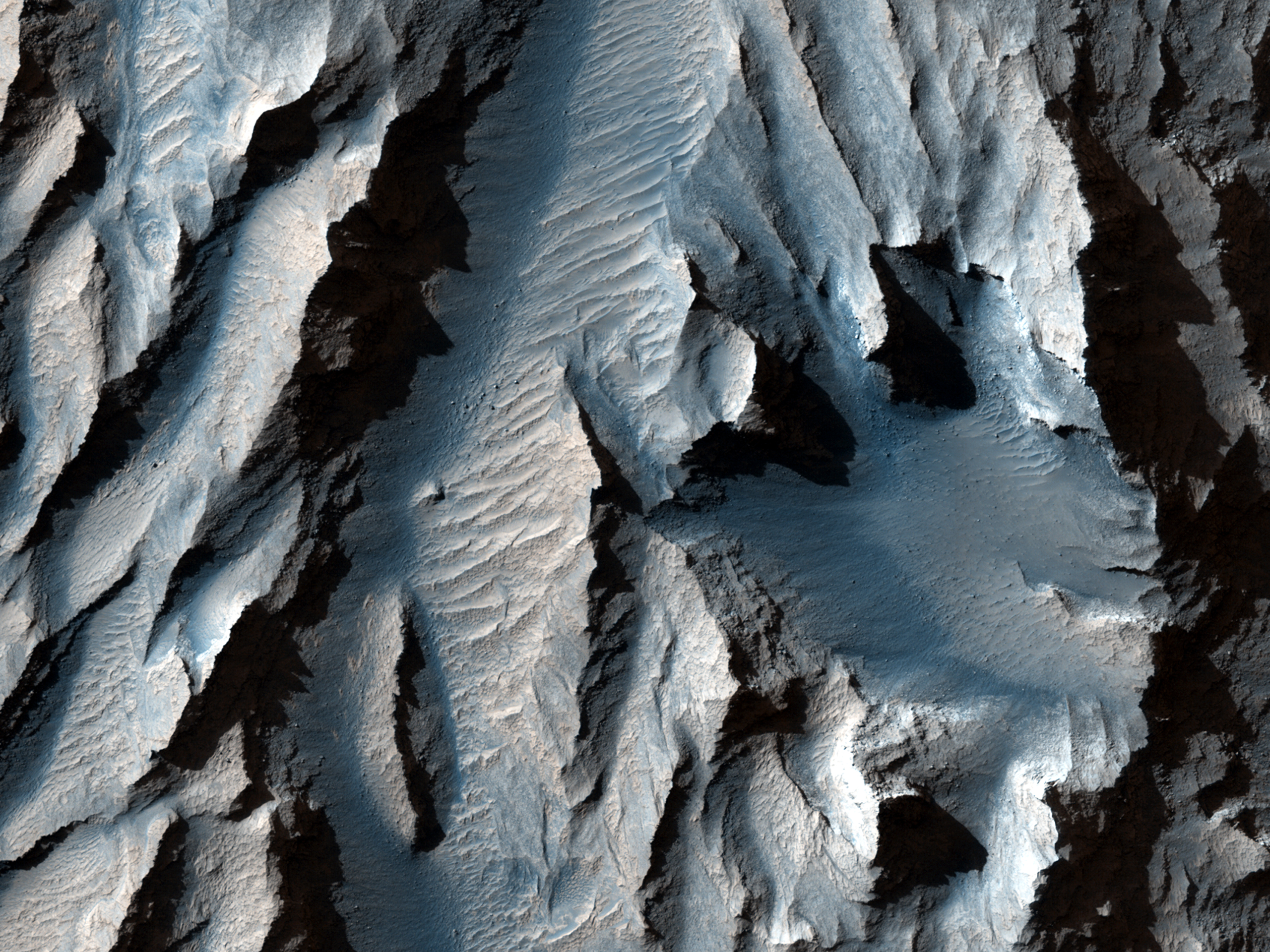Largest Canyon in the Solar System Revealed in Stunning New Images
It’s nearly 10 times as long as the Grand Canyon, and three times as deep. But how did it form?
By Brandon Specktor | Live Science Senior WriterJanuary 4, 2021 About 87 million miles (140 million kilometers) above the Grand Canyon, an even larger, grander abyss cuts through the gut of the Red Planet. Known as Valles Marineris, this system of deep, vast canyons runs more than 2,500 miles (4,000 km) along the Martian equator, spanning nearly a quarter of the planet’s circumference. This gash in the bedrock of Mars is nearly 10 times as long as Earth’s Grand Canyon and three times deeper, making it the single largest canyon in the solar system — and, according to ongoing research from the University of Arizona (UA) in Tucson, one of the most mysterious.
A close-up photo of part of Mars’ Valles Marineris, the single largest canyon in the solar system.
(Image: © NASA/JPL/University of Arizona)Using an incredibly high-resolution camera called HiRISE (short for High Resolution Imaging Science Experiment) aboard the Mars Reconnaissance Orbiter, UA scientists have been taking close-up shots of the planet’s strangest features since 2006. Despite some truly breathtaking images of Valles Marineris — like the one below, posted to the HiRISE website on Dec. 26, 2020 — scientists still aren’t sure how the gargantuan canyon complex formed.
